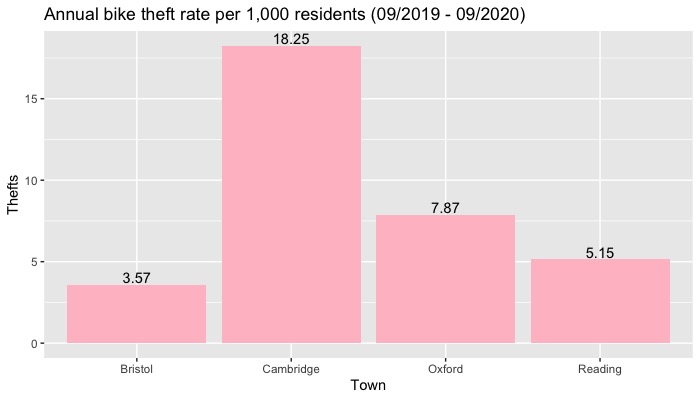Eight-year-old Robert Lefkowitz was a man (well, boy) with a plan. Inspired by his family physician, Dr Feibush, he knew he wanted to become a doctor.
“At a very early age, I decided I wanted to be just like this guy and I never wavered from that. In retrospect I felt that as a true calling, meaning something which I felt that, at a very deep level, I was destined to do. Not that I can explain why.”
Whilst Lefkowitz is now one of the most well-known names in the medical world, it isn’t for being a practising doctor. Sitting before me is a Nobel Laureate in Chemistry and one of the most cited researchers in the biological sciences. After completing medical school and some years of residency, Lefkowitz went from bedside to bench to focus on a research career. He was awarded the Nobel in 2012 for the discovery of G-protein-coupled receptors (GPCRs). GPCRs are molecules on the surface of membranes that enable communication between cells, and are therefore central to biological function. For example, one subset of GPCRs enables our response to the hormone, adrenaline. Another for responding to serotonin and so on. Importantly, GPCRs can also be targeted by medication, and nowadays more than a third of drugs approved by the FDA target these structures first identified by Lefkowitz and his team. While he may not be seeing patients as he once envisioned, I’d say his career isn’t too shabby. He says it was an accident.
“I had no intention of becoming a scientist,” Lefkowitz tells me. His first foray into research was one of necessity: a loophole that allowed him to avoid being drafted to Vietnam in the 1960s.
“It was a very unpopular war. Nobody wanted to go over there – some for ethical reasons, some for moral reasons. Maybe they were cowards, I don’t know. Certainly, no physicians wanted to go because we, as a group, didn’t support the war at all. But there were very few legal ways around getting shipped out to Vietnam for a year. One of the few was to be drafted into the public health service because they had a number of positions here in the United States including some very sought-after ones at the NIH and the CDC, as examples.”
Armed with a strong academic record, Lefkowitz received a two-year Public Health Service Commission and began working at the National Institute of Health (NIH) after completing two years of medical house training. It’s safe to say he hated it.
“I met with unremitting failure,” he states with a long pause, “and that was a new experience for me. I had never experienced sustained failure at anything in my life and I must say I think I got a little depressed there.”
In his last few months at the NIH, though, Lefkowitz had his first taste of success and began publishing in high-impact journals such as PNAS, Nature, and Science. However, it simply wasn’t enough to sway him from throwing himself into a senior medical residency at Massachusetts General Hospital, Boston. He had always loved clinical medicine, and his residency was no different. Six months in, though, he tells me he had an “epiphany”.
“I had this feeling something was missing. I was not as content as I expected to be. I had this feeling every day that there was something I wasn’t doing that I wanted to. I realised I missed the laboratory. I missed the day-to-day excitement of planning experiments, grappling with a scientific problem, analysing data, forming hypotheses. I realised I needed to change my career plans so that research played some role in my career.”
From then on, Lefkowitz gradually incorporated more and more research into his career. After completing his cardiology fellowship, he started his own lab at Duke University. As he concludes, “the rest is history”.
Now, Lefkowitz describes himself as a clinician-scientist, but I wonder whether his focus on fundamental concepts in molecular biology leaves much room for patient-centred thinking.
“I think there’s a linkage. I have both MDs and PhDs in my laboratory. Many of the PhD scientists don’t have any overarching vision of human biology in an integrative sense. I really do think that the only way to get that is to go to medical school. Even though the research I do is very basic, fundamental, biochemical, cell-biological, biophysical, there are always clinical ramifications to it […] Now, did I set out specifically to develop drugs or cure any diseases? No. But I did have this abiding sense that if the kind of receptors I thought would exist and then proved did exist then If I could make headway in understanding them there would have to be therapeutic implications of that.”
Whilst Lefkowitz has certainly made a huge, albeit unintentional, clinical impact through his research, I ask how he feels about leaving his first calling behind. Was all that time (and stress) at medical school really worth it? He has absolutely no regrets.
“Becoming a physician was one of the greatest privileges of my life and the opportunity to care for people and relieve suffering … to me that’s the highest privilege you can have.
“That said, the practice of medicine is not an innovative and creative enterprise. It’s set in stone and as long as you follow what’s set in stone you’re going to be ok. What about research? Exactly the opposite. If you do anything the way anybody else did, that’s called confirming somebody else’s findings. You’ve got nothing original. You’ve got nothing to publish.
“So you have the difference between not daring to do it differently and if you don’t do it differently, you’ve got nothing. I think if you have a creative spark, if you have creative yearnings, if you have a desire to write the book rather than read the book, you’re eventually drawn to the research side of medicine.”
Whilst I won my primary school art competition (two years in row, no less), I imagine this isn’t the sort of creativity Lefkowitz is on about. Indeed, he says it’s all about the question – choosing a question and figuring out how to answer it. Or, indeed, whether it is even possible to answer it.
“There is probably no more important set of decisions that a scientist makes in their careers than what to work on. In the moment that you choose the problem, you are setting the upper limit of what you could ever achieve. Let’s say you choose an essentially trivial problem and you succeed at the highest level – you write a hundred papers, you define everything you possibly could about what you were studying. Nobody cares. You have a trivial question, you’re going to have a trivial answer. Nobody’s ever going to care.
“At the other end of the spectrum, you could choose a really important question but in general the more important the question is, the riskier it is, the more difficult to solve it is. If you go so far over in choosing a non-trivial, important problem that you’ve chosen something which neither you nor anybody else is going to figure out in fifteen to twenty years because conceptually we‘re not even in the place to even approach that yet, then you also fail.”
“The secret,” Lefkowitz tells me, is “to proceed as far as you can on the spectrum from triviality to importance. Without falling off the cliff in terms of whether it’s even doable.”
All this sounds pretty simple. In theory, at least. Choose something that’s important but not impossible. But how do you tell if something is important and if it’s even doable if it has never been done before?
Lefkowitz has clearly been asked this question many, many times (the downsides of winning a Nobel, I guess). He chuckles as he answers.
“You can’t! It involves having a certain sense of taste doesn’t it.” Lefkowitz puts forward a neat analogy about going into an art gallery and being able to distinguish “a piece of crap” from “a work of art”.
He is unequivocal about the importance of mentorship in developing this sense of scientific taste, citing the prevalence of research lineages as evidence.
“You learn from a mentor. Does that mean the mentor explains it to you? No, because nobody can explain this. You watch them for x years, live with them. In the laboratory you watch what they choose to work on, what they choose to put the emphasis on, when do they choose to give up on something, when do they choose to soldier on even in the face of repeated failure […] You gotta know when to hold ’em, and you gotta know when to fold ‘em.
“These are judgement calls nobody can write down the set of rules for, but if you watch a talented mentor month after month for several years you begin to internalise their value judgement system. I believe that this is precisely why we have lineages in science which are very important. That is to say if you look at the scientific category of people [who] have been very successful in science and you ask, ‘who did they train with?’ Nine times out of ten you’re going to find they trained with an equally or even more successful and important scientist.”
Lefkowitz points me to an article he wrote a few years ago in which he traced his own scientific family tree, and an impressive one it is indeed. Three Nobel Laureates spanning just four generations. He also traced the ancestry of eight other NIH clinical fellows, and it is really quite extraordinary. I can’t put it better than Lefkowitz: it’s “studded with superstars”. The fact one of his “mentees”, Brian Kobilka shared the Nobel with Lefkowitz is perhaps a testament to how important mentoring is to him. And this certainly comes across this evening, as he reads me an email he had just sent to one of his “scientific grandchildren”, congratulating him on his recent work.
While this idea of a nurturing scientific community is certainly appealing, research is ultimately fuelled by competition. In his recently published (and brilliant) memoir, ‘A Funny Thing Happened on the Way to Stockholm: The Adrenaline Fueled Adventures of an Accidental Scientist’, Lefkowitz conveys how unsettling fierce competition can become. Though he certainly sees the good in competitive spirit, he admits to me that research “is not for the faint-hearted”.
“There are some people in the scientific field who would have you believe erroneously that everybody behaves in a perfect fashion all the time, we’re all gentlemen and gentleladies and we’re all above the fray. And that is abject bullshit.
“[…] You name any important scientific discovery, the more important, the more intense the competitiveness. Why is that? Because it’s just part of human nature. Is it a good or bad thing? Within limits it’s a good thing because science happens more quickly than it otherwise would, because you’re driven by the competitiveness. The time when it becomes bad is when people are so driven that they steal each other’s data or do dishonest things, et cetera et cetera. Those things, fortunately, are rare but they do occur.”
Lefkowitz takes a moment to reflect on his own experiences in the race to determine the structure of GPCRs and touches on an almost ensnaring quality to discovery, perhaps offering a reason why some might take an under-handed route to success.
“When you make a discovery and you know you’ve made a discovery, it’s addictive. It doesn’t have to be a Nobel prize-winning discovery like a family of GPCRS. It can be some trivial little thing. But standing there in front of a counter or spectrophotometer or whatever piece of equipment it is, seeing the numbers come out and realising you’re the first person in the world to ever appreciate this tiny little thing. Wow. I mean that’s great, that really is. And that’s what becomes addictive.”
Lefkowitz has been in the research game for quite some time and we move to discuss how science has changed over this period, and even the last year during the pandemic.
“Things are progressing exponentially faster. I’ve been in science [a] little over fifty years. When I look back on the first decade it was almost like a leisure sport compared to a frenetic baseball game today. It was almost leisurely compared to what we have today. I think things do move much more quickly. Granted it was not fundamental research, but the development of the Covid vaccines is dazzling. It’s one of the greatest triumphs of applied biomedical research in history.”
As a Laureate I had imagined Lefkowitz as having some degree of inside scoop on the Nobel. I ask whether the Covid vaccines had a chance of winning. Whilst he tells me he does not know more than the next person, he has clearly thought about it to some extent.
“There’s a shot. If a Nobel prize is awarded related to Covid it would not be to any of the people who developed the vaccines. It would be to the two scientists who developed the mRNA technology about a decade ago and had nothing to do with the covid vaccine. If that happens, you could make the case that it could happen this year, which would be unheard of. In a moment in 2020, that research went from backwater significance to kind of saving the world. It would not amaze me if they won the prize right out of the gate.”
Whilst Covid research has exemplified the power of modern science, I wonder what the future of research holds beyond the pandemic, half-expecting a non-committal answer about the vastness of human biology or perhaps a nod to Lefkowitz’s background in cardiology. As a neuroscience stan (is that embarrassing to say/admit?), I am happily mistaken.
“I’m not a visionary. I know the things which I find the most fascinating, but they are so far from being worked out. The whole basis of neurobiology, of mind, the way the nervous system works … is just mind-bending.”
And on that somewhat prophetic note, Lefkowitz tells me he has to dash off to a meeting. I quit the Zoom call and have another look at his diagram of scientific lineages and wonder how long it must’ve taken him to map out.




